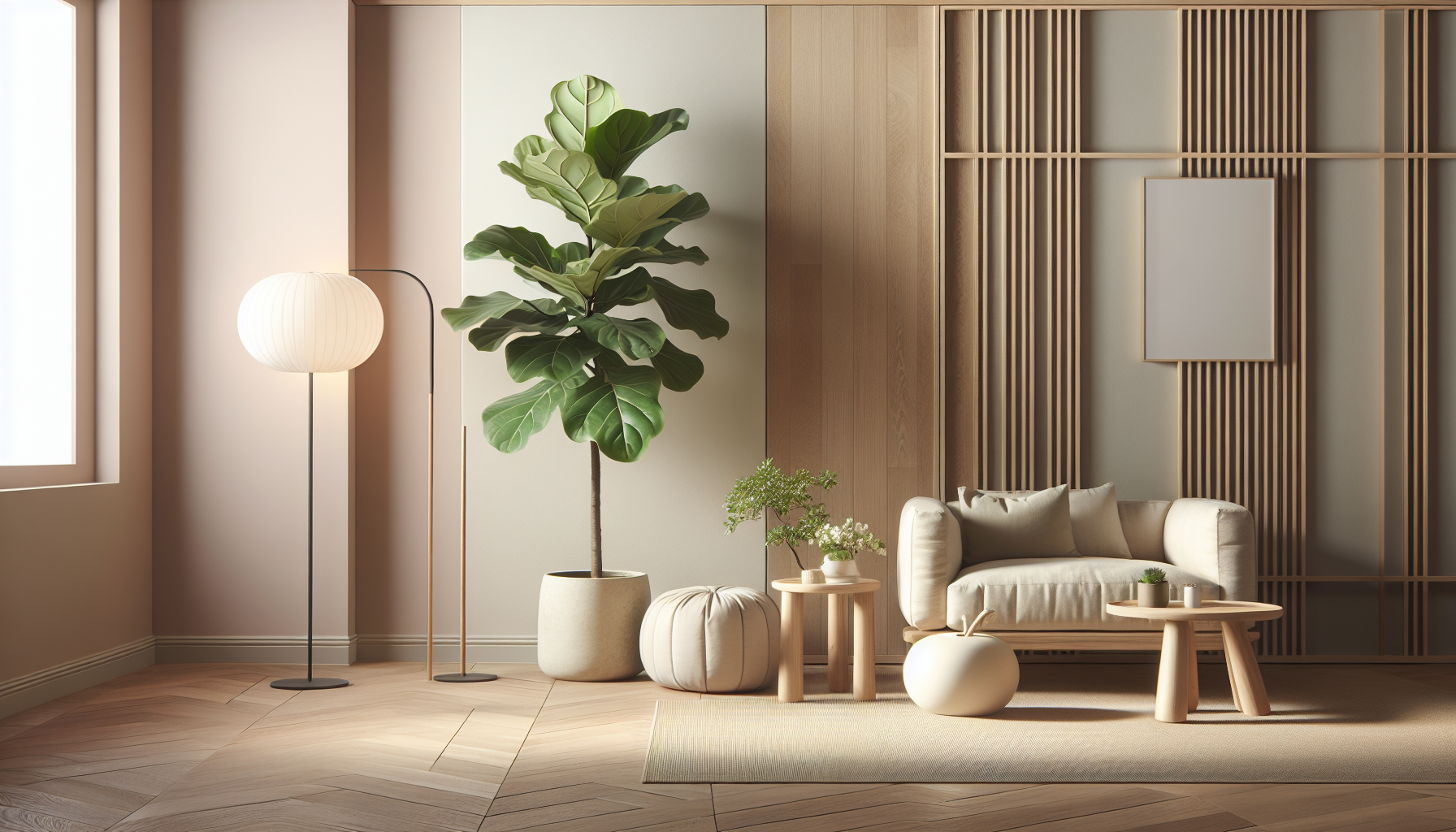What are the best plants for a Japandi home? If you’re looking to bring a slice of nature into your space while maintaining that minimalist and sophisticated aesthetic, you’ve come to the right place. This guide will help you select the perfect plants that not only enhance your home’s design but also resonate with the calming principles of Japandi style.
Understanding Japandi Aesthetics
Before we jump into the plant choices, let’s clarify what Japandi style is all about. This design philosophy blends Japanese and Scandinavian influences, emphasizing simplicity, functionality, and a deep appreciation for nature. The key elements are natural materials, muted colors, and a clean, uncluttered look. Keeping this in mind will help you choose plants that harmonize beautifully with your living space.
The Importance of Nature in Japandi Design
Incorporating plants into a Japandi home is vital as they bring life and softness to the space, breaking up harsh lines and adding organic warmth. Plants not only enhance aesthetic appeal but also improve air quality, making your home feel fresh and inviting. The right plant choices can create a serene atmosphere, echoing the tranquility that both Japanese and Scandinavian cultures prioritize.
Top Plants for a Japandi Home
Now that you have an understanding of Japandi aesthetics, let’s look at some plant options that are perfect for this design style.
1. Fiddle Leaf Fig
Characteristics
The Fiddle Leaf Fig is recognized for its large, glossy, violin-shaped leaves. This plant can become a striking focal point in your home.
Care
This plant prefers bright, indirect light and doesn’t require frequent watering—just allow the topsoil to dry out before watering again. Position it near a window where it can get plenty of natural light.
2. Snake Plant
Characteristics
The Snake Plant, with its tall, upright structure and variegated leaves, offers a charming contrast to soft furnishings.
Care
These plants can tolerate low light and require very little water, making them an ideal choice for beginners. Simply water it every few weeks or when the soil is completely dry.
3. ZZ Plant
Characteristics
The ZZ Plant is celebrated for its resiliency and unique leaf shape. Its glossy, dark green leaves can liven up a room without overwhelming it.
Care
Perfect for low-light conditions, this plant only needs water every couple of weeks. Just make sure to let the soil dry out completely between waterings.
4. Peace Lily
Characteristics
The Peace Lily stands out with its striking white flowers and dark green foliage. It adds a delicate touch of elegance to any room.
Care
This plant thrives in low to medium light and prefers to be watered when the top inch of soil feels dry. Plus, it helps purify the air, making it a beneficial addition to your home.
5. Japanese Maple
Characteristics
For those who want a larger statement piece, the Japanese Maple is a breathtaking option. Its stunning leaf colors and graceful branching pattern embody the essence of Japanese aesthetics.
Care
Place it in a spot with partial shade, and keep the soil consistently moist but not soggy. This tree can bring a beautiful, zen-like presence to your home or garden.
Incorporating Plants into Your Space
Placement Strategies
In a Japandi home, plant placement is key. Ensure that your plants harmonize with your furniture and decor. Consider these placement strategies:
-
Focal Points: Use larger plants like the Fiddle Leaf Fig or Japanese Maple as focal points in your living or dining areas.
-
Layering: Group smaller plants like Snake and ZZ plants together on a shelf for an arranged but casual look.
-
Decorative Accents: Use stylish pots in muted tones that complement your interiors. Natural materials such as clay or ceramic are ideal.
Creating Balance with Plant Groupings
When grouping plants, aim for a varied height and size to create visual interest while maintaining harmony. Here’s a simple guide:
| Plant Type | Height | Grouping Suggestion |
|---|---|---|
| Fiddle Leaf Fig | 3-6 ft | One tall plant as a focal point |
| Snake Plant | 1-3 ft | Pair with two or three smaller plants |
| ZZ Plant | 1-2 ft | Create a mixed grouping with a Peace Lily |
| Peace Lily | 1-2 ft | Use in mixed groups or alone as a statement |
| Japanese Maple | 5+ ft | Use as a standalone statement piece in a bright area |
Seasonal Care Considerations
Adapting Your Care Routine for Each Season
Plants, like us, have different needs depending on the season. Tailoring your care routine can make a significant difference in their health:
-
Spring: This is a time for growth. Increase watering and consider fertilizing your plants as they wake up from dormancy.
-
Summer: Monitor for pests and increase watering to accommodate for heat. Some plants may benefit from being moved to brighter spots.
-
Autumn: You might notice leaves dropping or changing color. Reduce watering and keep an eye out for dust on the leaves.
-
Winter: Many plants go dormant. Water less frequently and consider misting to provide humidity, especially in heated homes.
Choosing the Right Pots
The Impact of Pot Choice on Plant Care and Style
In Japandi design, pot selection is just as essential as plant choice. Here are some tips for selecting the right pots:
-
Natural Materials: Choose pots made of clay, ceramic, or unglazed materials that enhance the earthy aesthetic.
-
Mutual Tones: Select pots that either match the colors of your decor or offer a gentle contrast for added depth.
-
Breathable and Well-Draining: Make sure the pots have drainage holes and are made from breathable materials to prevent root rot.
Maintenance Tips for Your Plants
To keep your plants thriving and looking their best, consider these maintenance practices:
Watering Guidelines
Over and underwatering are common plant care pitfalls. Here are some general rules:
-
Use your finger to check soil moisture before watering. If the top inch is dry, it’s time to water.
-
Consider the type of plant; some might need more frequent watering than others.
Pruning Practices
Regular pruning is essential to maintaining healthy plants:
-
Remove yellow or damaged leaves to encourage new growth.
-
Trim any unsightly branches to keep your plants looking neat.
Pest Management
Keep an eye out for pests that can invade houseplants:
-
Use a mild soap solution to clean leaves and deter pests.
-
Monitor regularly for any signs of infestation and act quickly if you notice bugs.
Creating a Japandi Garden Space
If space allows, create a dedicated garden area either inside or outside your home. This can serve as a sanctuary for relaxation and enjoyment.
Indoor Garden Ideas
If you’re lucky enough to have some indoor space available, consider the following:
-
Window Sills: Utilize window sills for smaller plant pots, providing sunlight and adding cheerfulness to any room.
-
Hanging Plants: Opt for hanging planters to maximize space while adding vertical interest to your decor.
Outdoor Space Considerations
For outdoor areas, think about how to harmonize your plants with your garden layout:
-
Pathways: Plant low-maintenance, smaller plants along pathways to create a cohesive look.
-
Zen Corner: Dedicate a quiet corner for relaxation, with larger plants, stones, and perhaps a small water feature to evoke the calming aspects of nature.
The Benefits of Having Plants in Your Home
Psychological Advantages
Plants are not just visually appealing; they can drastically affect your mood and well-being. Studies have shown that having plants can reduce stress and increase feelings of calmness and satisfaction.
Health Benefits
Improving air quality is another essential benefit of having plants in your home:
-
They can absorb toxins and release oxygen, helping to refresh your indoor air and reduce the likelihood of fatigue or allergies.
-
Additionally, the presence of plants can improve focus and productivity, making them excellent companions for workspaces.
Conclusion
Choosing the right plants for your Japandi home isn’t just about aesthetics; it’s about creating a space that feels peaceful, balanced, and alive. Whether you opt for the dramatic stature of a Fiddle Leaf Fig or the understated elegance of a Snake Plant, each choice contributes to an environment of tranquility and beauty.
By thoughtfully selecting and caring for your plants, you can achieve that perfect harmony between nature and design that defines the Japandi philosophy. So why not start today? With a little patience and care, you’ll cultivate a home that truly reflects serenity and sophistication.

